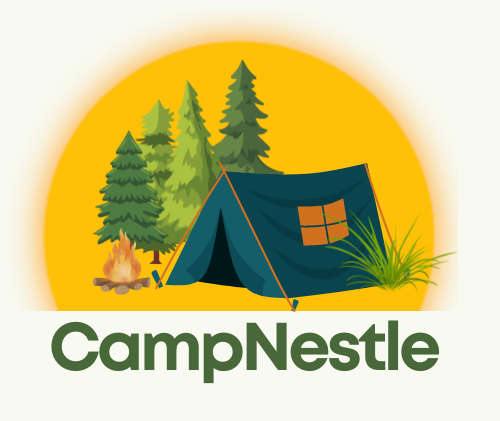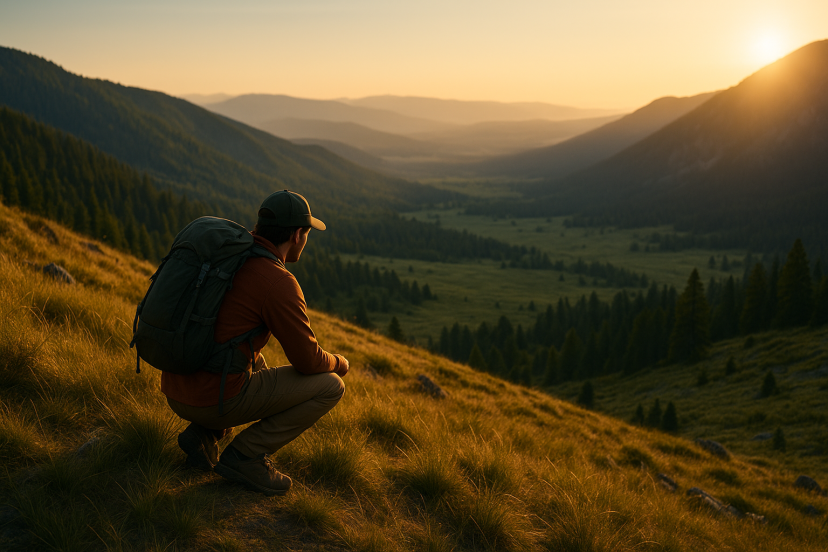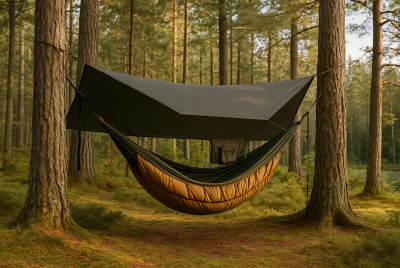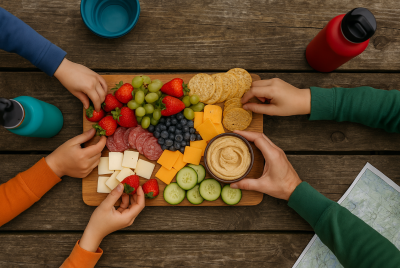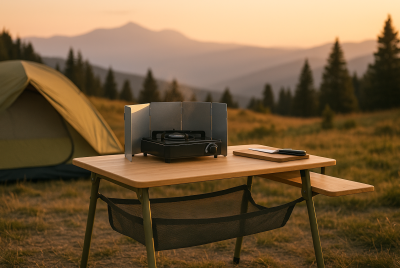How to Pick a Campsite: Terrain, Safety & Scenery
We may earn a commission for purchases made using our links. Please see our disclosure to learn more.
You’ve hiked all day, your feet are singing the blues, and the sun is slipping behind the ridge. Where you drop your pack next can make the difference between a cozy night and a comedy of errors. In this friendly guide on How to Pick a Campsite, you’ll learn a simple, reliable process to evaluate terrain, safety, and scenery—so you sleep better, stay safer, and wake up smiling.
Start With Your Trip Goals (Comfort > Convenience)
Before you scan for flat ground, ask: What do I really want tonight? Silence? A sunrise view? Quick access to water? Your priorities will filter options fast. If you’re with kids or a first-timer, lean toward established sites and calmer conditions. Solo and seeking solitude? You might hike a bit farther to find privacy and that perfect patch of earth.
Read the Weather (And Plan for the Wet Stuff)
Check the forecast and the sky. Storms, wind shifts, and overnight temperature drops change the “right spot” quickly. If rain is on the menu, choose slightly elevated ground with natural drainage and avoid low pockets that collect water. For a deeper dive into soggy situations, see our wet-weather camping guide on camping in the rain.
Safety First: Away From Water, Cliffs, and Traffic
Water is beautiful—and sometimes mischievous. In flash-flood country, do not camp in dry washes or on sandbars. In canyons or near cliffs, keep a safe buffer from edges and fall lines. In popular campgrounds, consider pedestrian “traffic”: bathrooms, trailheads, and bear lockers can be surprisingly busy late and early.
Slope, Drainage & Soil: The “Sleep Test”
Your body notices slope more than your eyes. If you don’t have a bubble level, do the “sleep test”: lie down in both directions and see if your head or hips slide. Favor gentle, slightly crowned ground so rain runs off, not under you. Sandy soil drains well but may need longer stakes. Clay can turn slick fast. Forest duff is comfy but watch for roots.
Sun, Shade, and Temperature Control
Morning sun dries condensation fast. Afternoon shade keeps you cool. If it’s hot, aim for dappled shade; in cold shoulder seasons, let the sun work for you. Pay attention to aspect: slopes facing south tend to be warmer, while north-facing ones remain cooler and more humid.
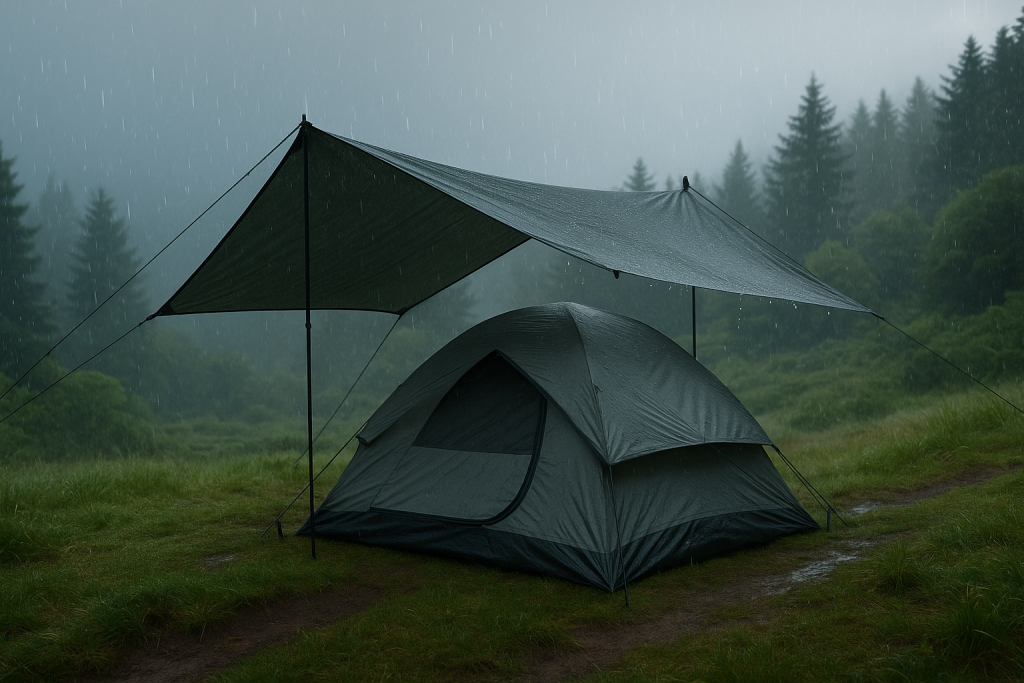
Privacy, Noise & The “Feel” of a Site
Step into the site and breathe. Do you hear running water (peaceful) or a road (not so much)? Is the space cozy or cramped? Wind channels through gaps and gullies—if the air “hums,” you might be in a wind tunnel. If you’re a light sleeper, avoid social hubs like communal fire rings.
Wildlife-Smart Choices (Bear Country, Bugs & Food Zones)
Where wildlife travels, you should not store snacks. Avoid game trails and berry patches. If you’re in bear country, pick a site with easy options for bear-resistant food storage and set a separate cooking zone downwind from your tent. For mosquitoes, breezy spots deter swarms; stagnant water invites them.
Look Up: Trees, Limbs, and “Widowmakers”
Before you commit, scan the canopy. Dead snags, cracked trunks, or hanging limbs are non-negotiable red flags. After storms or during high winds, stress on branches increases. If it looks questionable, move. Your tent is not a helmet.
Ground Truth: Rocks, Roots, and Footprint Fit
Lay out your footprint or tent body to confirm fit. Clear small twigs and pinecones, but don’t excavate trenches or rearrange the landscape. If you’re on slickrock or sand, plan your stake strategy (and bring anchors or longer stakes). Sleeping pads forgive many sins—but not a pointy rock under your hip.
Water Access Without the Splash Zone
Close enough to fetch and filter water without trampling the bank; far enough to keep noise, bugs, and dampness away. Designate one path to the water source for your group to minimize impact and keep camp tidy.
Fire Rules, Wind Direction & Smoke Control
If fires are allowed, use existing rings and consider wind direction. You don’t want embers drifting into tents or smoke fumigating your sleep. In fragile or dry areas, skip the fire and cook on a stove—your lungs, gear, and the landscape will thank you.
Group Dynamics: Space for Tents, Kids, and Dogs
Sketch the layout: tent here, kitchen there, hangout zone over there. Give kids safe boundaries. If traveling with a dog, position your tent so the leash doesn’t cross cook areas or trip lines. Keep late-night chat zones away from folks who turn in early.
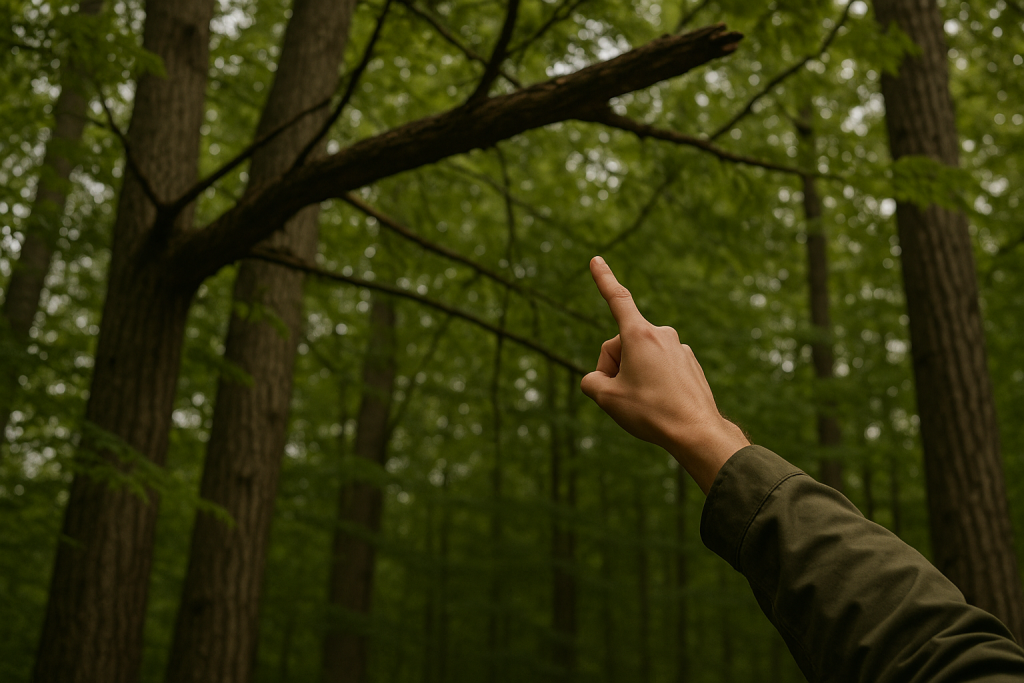
Map, Signal & “What If” Access
Think through a midnight “what if.” Can you navigate to a road or trailhead? Do you have a line of sight for satellite messages, if you carry a communicator? In exposed terrain, avoid lightning-prone high points and lone trees. In deep forest, know which way the trail runs before dark.
Leave No Trace Mindset (Choose Durable, Minimize Impact)
Favor durable surfaces: rock, gravel, dry grass, or established pads. Keep your campsite discrete and your footprint light. Pack out micro-trash—those tiny food corners and tea tags love to hide in pine needles.
Two Quick “Go/No-Go” Mini-Drills
- Wind Check: Clip a small ribbon to a pole and watch for gusting or funneling winds.
- Rain Runoff: In a light sprinkle, see where water wants to travel. If it’s toward your tent spot, choose another patch now, not at 2 a.m.
Terrain-Specific Tips (Forest, Desert, Beach, Alpine)
Forest
Great for natural wind breaks and soft ground. Watch for dead limbs and root bumps.
Desert
Avoid washes and cryptobiotic soil. Stake with sand anchors or bury stakes deadman-style.
Beach
Mind the tide charts and storm surge. Sand shifts—double stake and use guyline extensions.
Alpine
Afternoons can turn wild quickly. Tuck behind boulders or low krummholz for shelter, away from ridgelines.
Campground Etiquette and Smart Selection
In established campgrounds, look for pads with good drainage, healthy trees, and a reasonable buffer from bathrooms (convenient, not noisy). Respect quiet hours, dim your headlamp at night, and keep cooking smells away from neighbors.
🔹 Amazon Picks: 5 Products That Make Campsite Selection Easier
Below are practical tools to scout, secure, and sleep comfortably once you’ve chosen your spot. (Links included for convenience.)
1) Black Diamond Spot 400 Headlamp
Why it helps: Hands-free scouting at dusk reveals roots, slope, and hazards you’d miss in daylight.
Features: 400 lumens, dimming + red light, IPX8 water resistance
Pros: Bright, compact, reliable buttons with gloves
Cons: Button combo learning curve
Best for: Campers who often set up at twilight
Review snapshot: Praised for brightness and battery life; occasional complaints about mode cycling.
2) Therm-a-Rest Z Lite Sol Closed-Cell Foam Pad
Why it helps: A quick “ground feel” tool—lay it down to test slope, lumps, and warmth.
Features: Closed-cell foam, reflective surface, folds accordion-style
Pros: Durable, lightweight, can be a sit pad while site-scouting
Cons: Bulkier than inflatables
Best for: Hikers who want fast, forgiving comfort
Review snapshot: Loved for toughness and versatility; some find it too firm.
3) MSR Groundhog Tent Stakes (Pack of 6)
Why it helps: Holds in varied soils (duff, gravel, sand edges) so your tent stays put in wind.
Features: Y-beam aluminum, reflective pull cords
Pros: Excellent holding power, easy to extract
Cons: Can bend in rocky ground if hammered hard
Best for: Anyone camping on mixed terrain
Review snapshot: Consistently praised for grip; occasional bends reported on granite.
4) BearVault BV500 Bear-Resistant Food Canister
Why it helps: Enables wildlife-smart site layout with a clear, separate food zone.
Features: Transparent polycarbonate, tool-less lid, approved in many parks
Pros: Easy to see contents, doubles as a camp seat
Cons: Bulky in smaller packs
Best for: Backpackers in bear country or food-savvy critter zones
Review snapshot: Commended for simplicity and approvals; weight is the common gripe.
5) Garmin inReach Mini 2 Satellite Communicator
Why it helps: Two-way messaging and SOS if your “perfect site” is off the grid.
Features: Iridium network, tracking, weather, long battery life
Pros: Peace of mind, compact, reliable signal
Cons: Subscription required
Best for: Remote or shoulder-season trips
Review snapshot: Users value reliability and forecasts; subscriptions confuse some first-timers.
Comparison at a Glance
| Model | Key Spec(s) | Warranty | Approx Price/Tier | Best For |
| Black Diamond Spot 400 | 400 lm, IPX8 | Manufacturer warranty (verify seller) | $ / Budget–Mid | Scouting and setup at dusk |
| Therm-a-Rest Z Lite Sol | Closed-cell foam, reflective | Manufacturer warranty (verify seller) | $ / Budget | Fast ground checks + durable sleep |
| MSR Groundhog Stakes | Y-beam aluminum, reflective pulls | Manufacturer warranty (verify seller) | $ / Budget | Holding power in mixed soils |
| BearVault BV500 | Bear-resistant, tool-less lid | Manufacturer warranty (verify seller) | $$ / Mid | Food security in bear country |
| Garmin inReach Mini 2 | Sat comms, SOS, weather | Manufacturer warranty (verify seller) | $$$ / Premium | Remote trips, emergency comms |
Quick highlights:
- Scout smarter: Bright headlamp = safer evening setups.
- Test comfort: Lay a foam pad where your hips and shoulders rest.
- Stake confidence: Y-stakes bite better in tricky soil.
- Store smart: Separate food zone = safer wildlife and sleep.
- Signal check: A communicator shines when plans change.
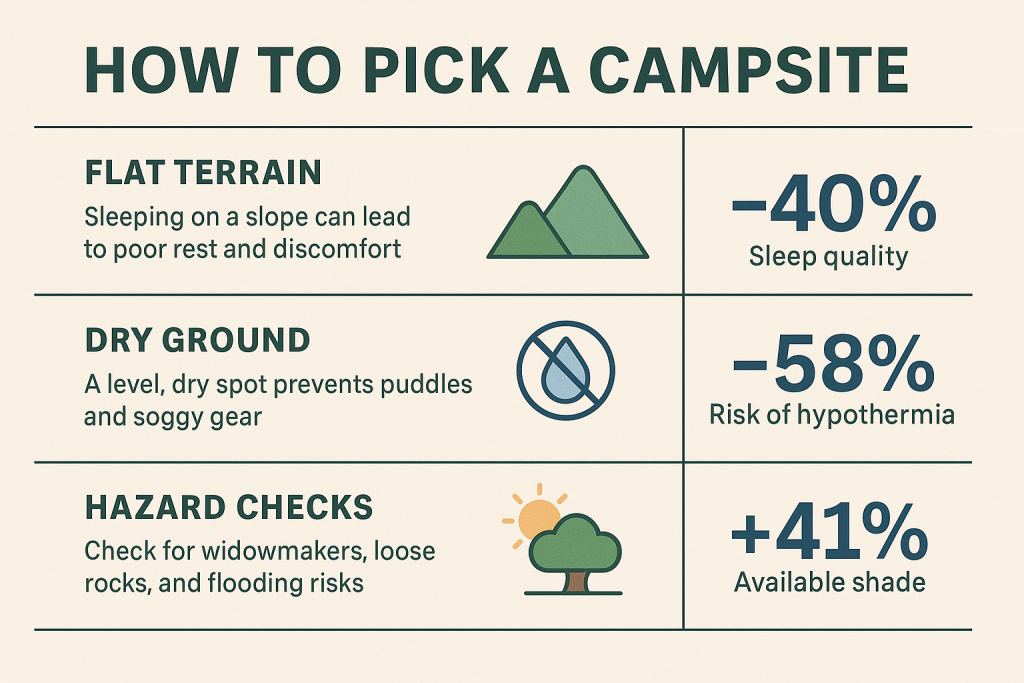
🧪 Research-Backed Insights (Why These Rules Work)
- Set back from water to protect shorelines and yourself. Expert guidance recommends camping at least 200 feet from lakes and streams to reduce erosion, wildlife stress, and water contamination. This distance also limits bugs and dampness at night. See the Leave No Trace guidance on durable surfaces (2017–present).
- Lightning is a real risk in exposed terrain. A 2025 analysis by the National Lightning Safety Council and the National Weather Service reports 492 U.S. lightning fatalities from 2006–2024, with nearly two-thirds occurring during outdoor leisure—think hiking, fishing, and camping. Translation: avoid ridgelines and lone trees, and plan safer low-profile camps when storms threaten.
(Bonus safety note: Park and agency documents also flag hazardous trees—dead limbs and snags—as a key campsite risk; designated sites are inspected, but backcountry travelers must self-assess overhead hazards. )
FAQs
How far should I camp from water?
For both safety and impact, aim for a healthy setback from lakes and streams. It keeps shorelines wild, reduces bugs and dampness, and lowers flood risk.
What’s the best way to check if a site is flat enough?
Lie down on your pad for 30 seconds in both directions. If your body “slides,” the slope will bug you all night. Slight crowns shed rain; bowls collect it.
Where should I put my kitchen relative to my tent?
Downwind and a short walk away. Keep food odors out of your sleeping zone and store food properly (bear can or approved method in your area).
What’s the safest choice in a thunderstorm?
Avoid ridgelines, peaks, and lone trees. Seek lower terrain away from tall isolated objects and spread your group out.
Any quick bug-reducing tips near camp?
Favor breezy locations, avoid stagnant water pockets, wear long sleeves at dusk, and use EPA-registered repellents on skin and permethrin on clothing/gear.
Wrap-Up: Your Campsite “Feel” Is a Skill You Build
Choosing a great campsite is part science, part gut. You scan the sky, feel the breeze, check the ground, and listen for the creek—or the highway. With a few smart habits (and a couple of handy tools), you’ll pick spots that are safer, drier, quieter, and way more beautiful. Trust your senses, adjust for the weather, and go light on the land. You’ve got this—sleep well and wake to a trail you can’t wait to wander.
